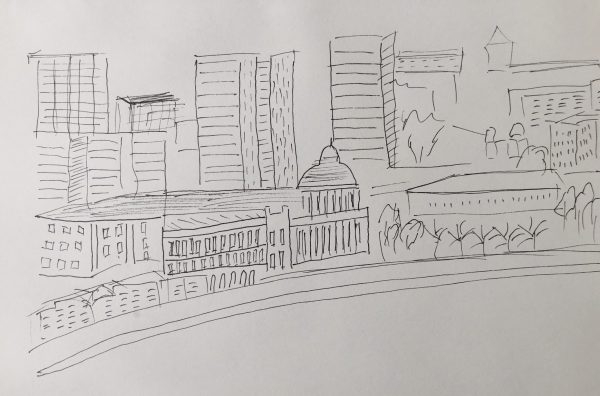Guinea is a small African country located in West Africa and as such overlooks the Atlantic Ocean. To differentiate it from Equatorial Guinea and Guinea-Bissau it is generally referred to as Guinea Conakry. This is to avoid confusion with homonymous countries. Guinea has a population of 12.5 million inhabitants in a country with a surface area of 245,857 square kilometres. This sub-Saharan African country is called the water tower of Africa. A country that has many assets to succeed in terms of both climate and nature.
1. Conakry, the capital of Guinea

The population of the Guinean capital is about 18.5% of the country’s total population. There are 2.32 million inhabitants in Conakry, a coastal city covering 450 square kilometres. This capital of Sub-Saharan Africa is also one of the important ports of West Africa.
2. Nzérékoré, one of the largest cities in Guinea
This city is located in the extreme south of the country on the edge of the Central African forests. Nzérékoré is not far from Côte d’Ivoire and Liberia. There are about 300,000 inhabitants registered in Nzérékoré.
3. Kindia
242,625 inhabitants are living in Kindia, one of the largest cities in Guinea. This city is about 140 kilometres from the capital, in the southwest of the country. The city is located in a relatively hilly region with an average altitude of 415 metres above sea level. Close to the town of Kindia is Mount Gangan, which rises to a height of 1,117 metres. This mountain is the emblem of the city.
4. Kankan
Two hundred sixteen thousand one hundred fifty-nine inhabitants have been counted in Kankan. This city is located in the centre of the country, and it is watered by the Milo River, which is a tributary of one of the largest rivers in Africa, the Niger River.
Merchants around the 18th century would have found this city in Guinea. The city’s activity revolves mainly around the primary sector. In particular the cultivation of maize, sorghum, mango and cotton. Also noteworthy is the presence of several factories, including a cotton ginning factory.
5. Labé
This city in the centre of the country has 205,809 inhabitants. This important Guinean city has a university, a teacher training centre, as well as numerous primary and secondary schools and a large training centre.
6. Siguiri
The town of Siguiri is home to a community of about 200,000 inhabitants. The city is located in the North-East of the country, and the main activity is agriculture. Indeed, the nearby presence of the Niger and Tinkisso Rivers allows to work the crops and to rinse them.
It should be noted that the Kankan region is home to a gold mine, in which the state holds a 15% stake.
7. Boké
183,875 inhabitants are living in Boké, one of the largest cities in Guinea. This town is about 250 kilometres from the capital. Boké is located in the northeast of the country, on the banks of the Rio Nunez river.
8. Kamsar
This coastal town in the northwest of the country is located on the banks of the Rio Nunez. It is one of the many marine estuaries of Guinea-Conakry. The Rio Nunez estuary is about 50 kilometres long. This city is therefore naturally a large port from which the minerals extracted from the Guinean soil are generally exported.
But this city is also a place that gives a large home to agriculture, especially with the cultivation of coffee. The coffee trees ensure an abundant production thanks to the rainy and tropical climate of the region of Kamsar.
Kamsar is one of the largest cities in Guinea, with its 113,350 inhabitants it is in eighth place.
9. Kissidougou
The latest estimates for the population of the town of Kissidougou are 103,335.
The name of the town of Kissidougou is said to come from the Malinke dialect. “Kissi” means survival and “dougou” means land. When translated literally, this means “Land of Survival”.
This town in southern Guinea-Conakry is about six hundred kilometres from the capital.
10. Guéckédou
97,466 inhabitants are living in Guéckédou. A town in the south of the country close to the border with Liberia and Sierra Leone.
This town in Guinea is located in a forested area at an altitude of about 400 metres (above sea level).
Economically, it should be noted that this town is a place of commercial exchange as Guéckédou is located at the crossroads between three African countries. (Guinea-Conakry, Sierra Leone and Liberia) Rice, coffee, palm nuts and cola are traded there.
There is also a factory producing palm oil and soap.